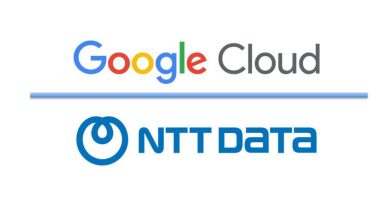Dead End? Why Investing in Generative AI Projects Might Not Be For You
You Have to Make a Big Choice in Terms of This Major Investment

Could it be that generative AI (Artificial Intelligence) is overpromising but underdelivering?
The answer ultimately depends on which side of the Gen AI fence you’re on.

Rashid Khan, Co-Founder and CPO at Yellow.ai, is unsurprisingly bullish about generative AI, describing it as transformative, “fundamentally altering how organisations engage with customers and innovate products” and “reshaping business operations.” Khan also posits that the disruption Gen AI causes— enhancing software capabilities to enable content generation, autonomous decision-making, and relationship management—“surpasses the incremental changes brought by mobile and cloud technologies” and is marking a new era of technological advancement.
Equally bullish on generative AI is Kris Payne, Director of Technology Solutions, APAC, at Neo4j, who points to the substantial productivity gains—supposedly at USD $7.9 trillion—contributed by this innovation in the two years since its slow start back in 2022. Today, global adoption of Gen AI is a solid 45% and 59% in Singapore.
It is an impressive number, the USD $7.9 trillion, but it should be taken with a grain of salt as the figure might be inflated or is at worst unverifiable. Regardless, Phong Nguyen, Chief AI Officer at FPT Software, claims generative AI is revolutionising industries across the board with 65% of organisations utilising Gen AI in at least one business function and 75% of CEOs identifying it as crucial for maintaining competitiveness as AI “empowers organisations to scale efficiency and innovation at an unprecedented level.”
From Proof of Concept to Production: A Challenge Unlike No Other
Interestingly, for all these purported gains, Gartner in June reported that companies are struggling to put their Gen AI-related Proofs of Concepts (PoC) into production. In fact, Gartner claimed that by 2025, at least 30% of generative AI projects will be abandoned after PoC—meaning Gen AI initiatives that will supposedly help companies will never see the light of day. There are a couple of major reasons for this high abandonment rate, but the biggest appears to be the growing cost of developing such projects.
These estimates from Gartner show the substantial investments companies will have to make to bring their generative AI PoCs into production:
“After last year’s hype, executives are impatient to see returns on GenAI investments, yet organisations are struggling to prove and realise value. As the scope of initiatives widen, the financial burden of developing and deploying Gen AI models is increasingly felt,” said Rita Sallam, Distinguished VP Analyst at Gartner. “Unfortunately, there is no one size fits all with GenAI, and costs aren’t as predictable as other technologies. What you spend, the use cases you invest in and the deployment approaches you take, all determine the costs. Whether you’re a market disruptor and want to infuse AI everywhere, or you have a more conservative focus on productivity gains or extending existing processes, each has different levels of cost, risk, variability, and strategic impact.”

While the costs are largely unpredictable, what is for certain is that they could spiral out of control, or at least be substantial enough to have serious financial ramifications—with no guarantees that the investment will yield an equally substantial return. This uncertain trade-off, according to the same Gartner report, is enough to spook Chief Financial Officers of organisations looking to capitalise on Gen AI.
It might be an investment worth making, with earlier adopters of generative AI across industries and businesses reporting to Gartner a 15.8% revenue increase, 15.2% cost savings, and 22.6% productivity improvement on average—figures that are, according to Sallam, “a valuable reference point for assessing the business value derived from GenAI business model innovation.”
Then again, estimating the added business value Gen AI brings is an inexact science, as the benefits of this innovation largely vary from company to company and depend on factors like use cases, business roles, and available skills. In addition, the substantial business value often materialises in the long term—think of it as delayed gratification—after years of investing in the technology.
This uncertainty is reason enough to cut ties with a Gen AI initiative. The sheer difficulty of putting PoCs into production might be the straw that forces business executives overseeing these PoCs to abandon the Gen AI ship.
But why is it so hard anyway?
More Than a Financial Burden: The Challenges of Bringing Generative AI PoCs to Life
The biggest problem is that scaling—turning a small idea into something big and operational—involves overcoming major hurdles in infrastructure building, organisational integration, and data management.
“Moving from PoC to production requires bridging a significant gap between phases. While a PoC is a small, controlled experiment, production involves scaling the Gen AI solution across departments or regions in a more complex, dynamic environment,” Nguyen explained. “During this transition, organisations must address several challenges, such as ensuring data readiness and consistency, managing higher computational demands, and maintaining model accuracy over time.

Khan agrees, adding that scaling PoCs from small, controlled environments to handling real-world complexities will require robust infrastructure, seamless integration, and high-quality data. This means data—the backbone of any good AI—must be clean, well-structured, and ethically sourced to ensure reliability and avoid bias. Unfortunately, many organisations are struggling with data management, hindering their ability to train the kind of reliable AI models needed for Gen AI that works.
“Often, the data required for AI models is siloed or incomplete, and many organisations lack the expertise to scale AI solutions effectively or suitable infrastructure. Beyond data, ensuring that AI systems operate ethically and responsibly is increasingly important, especially in areas like data privacy and bias mitigation,” added FPT’s Nguyen.
These issues ultimately cause other problems, including the possibility of AI hallucinations—unexpected and often unexplainable outputs, like an AI chatbot struggling to give a detailed response—that could potentially derail generative AI efforts. In fact, Neo4j’s Payne deems managing AI hallucinations as one of the biggest challenges in moving generative AI PoCs into real-world use. Standard Retrieval Augmented Generation (RAG) helps against AI hallucinations up to a certain extent, but its effectiveness, according to Payne, is “limited by the quality of the data.” He further added that “GraphRAG takes this further by using knowledge graphs to expand the search and find more useful information, resulting in accurate GenAI results to reduce hallucinations.”
But fixing these issues on data and AI reliability is just one part of the equation. The other part is making sure these PoCs have a clear connection to business objectives, with the projects aligned with strategic goals and involving technical and business teams in defining success metrics and deployment strategies. These non-negotiables underscore the multifaceted nature of bringing PoCs to the production line and only adds to the challenge of bringing Gen AI projects to life.
“This transformation goes beyond mere technology investment; it requires building an AI-first culture within the organisation,” Khan pointed out. “This includes upskilling the workforce, fostering trust in AI-driven decisions, and ensuring robust data governance and ethical standards. The shift is beyond incremental improvements; it’s about envisioning a future where AI doesn’t just support business operations—it defines them.”
Is Generative AI a Pursuit Worth Taking?
Such a future may be difficult—and costly—to attain, requiring careful planning, collaboration, and continuous improvement. But it could be rewarding, according to FPT Software’s Nguyen. It’s the same view shared by Khan, who also pointed out that “the initial curiosity surrounding GenAI has turned into an urgent need for transformation.” And, today, companies are leveraging GenAI to automate complex processes, enhance data-driven decision-making, and unlock new revenue streams.
These all sound good, maybe even too good to be true. But enough companies seem to have gained these benefits to give generative AI the proverbial benefit of the doubt. However, it is becoming increasingly clear that Gen AI projects aren’t for everyone—especially not for businesses without deep enough pockets or those unwilling to risk making substantial investments for long-term returns that aren’t even guaranteed.
Ultimately, the choice to pursue generative AI projects boils down to which side of the fence you are on.
Do you believe in the promise of generative AI enough to invest in it until fruition, or are you not sold completely?
You have a choice to make.




